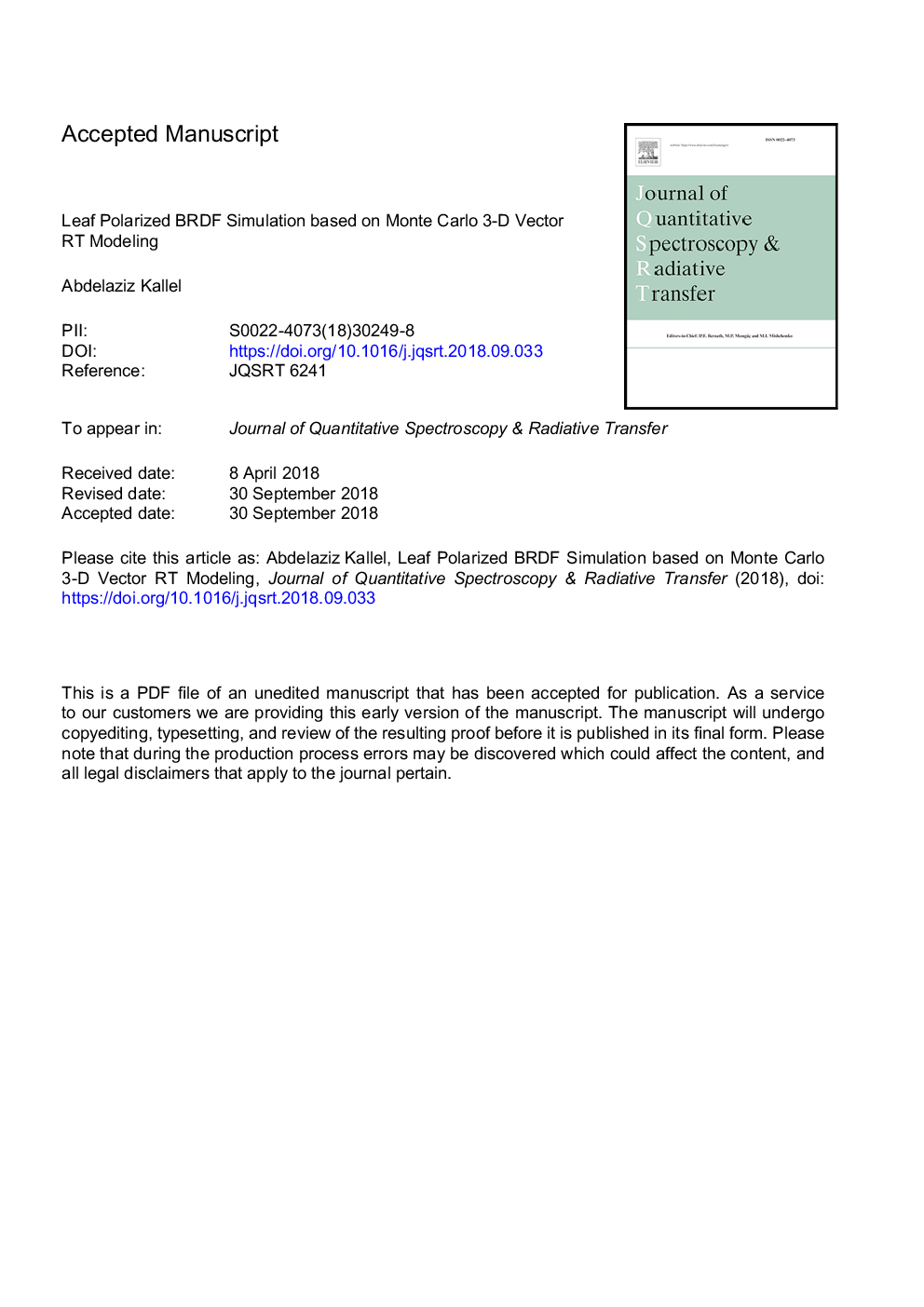| کد مقاله | کد نشریه | سال انتشار | مقاله انگلیسی | نسخه تمام متن |
|---|---|---|---|---|
| 11263131 | 1781699 | 2018 | 42 صفحه PDF | دانلود رایگان |
عنوان انگلیسی مقاله ISI
Leaf polarized BRDF simulation based on Monte Carlo 3-D vector RT modeling
دانلود مقاله + سفارش ترجمه
دانلود مقاله ISI انگلیسی
رایگان برای ایرانیان
کلمات کلیدی
موضوعات مرتبط
مهندسی و علوم پایه
شیمی
طیف سنجی
پیش نمایش صفحه اول مقاله

چکیده انگلیسی
The category of 3-D Vector radiative transfer (VRT) modeling was proved accurate enough to mimic realistically the polarized component of a vegetation canopy reflectance. Nonetheless, the reliability of such variety of model is still somewhat hampered by a lack of parameterization of the light polarization at the leaf level. This is traditionally based on Fresnel like specular reflection occurring at the leaf surface-air interface. Herein, we propose to perform an adaptation of the VRT formalism for leaves medium case based on the Monte Carlo (MC) forward ray tracing simulation. Two phenomena are taken into account; (i) a decrease by an absorption law within the different leaf tissues that is governed by the absorption coefficients; (ii) a reflection or refraction in the interface between two tissues that is sketched by the tissue refractive index ratio. This latter effect plays at modifying the light polarization since the parallel and perpendicular components of the wave are not scattered with the same probabilities. Rays will travel generally along long distances before exiting the medium, thereby leading to a large running computational time. In order to make the computation more efficient, we developed a dedicated model aimed at predicting the average so-called ray effect after a long travel. Hence, the ray tracing is stopped earlier in practice. The improvement is extended to hyper-spectral simulations as the demand is increasing. A new MC weighted sampling technique is proposed in this study with the objective to be applicable once for close wavelengths using the same tracing. Alike, as to simulate canopy reflectance, all the leaf directional scattering distributions are required, multi-angular simulation are gathered using the same ray tracing technique. Experimental results show large differences between classical 1-D model and the new proposed here, as leaves are no longer treated as Lambertian surfaces, with thin peak of specular reflection, but the reflectance increases in the forward direction. Moreover, with the new formulation leaves highly polarize light in both horizontal and horizontal-diagonal directions in the forward and inclined-forward directions, respectively. Taking into account the polarization mainly affects the scattering distribution for polarized incident light. This effect is more pronounced for smooth leaves. By comparison to the existing measurements of reflectance and polarization, the model shows generally the same trends.
ناشر
Database: Elsevier - ScienceDirect (ساینس دایرکت)
Journal: Journal of Quantitative Spectroscopy and Radiative Transfer - Volume 221, December 2018, Pages 202-224
Journal: Journal of Quantitative Spectroscopy and Radiative Transfer - Volume 221, December 2018, Pages 202-224
نویسندگان
Abdelaziz Kallel,